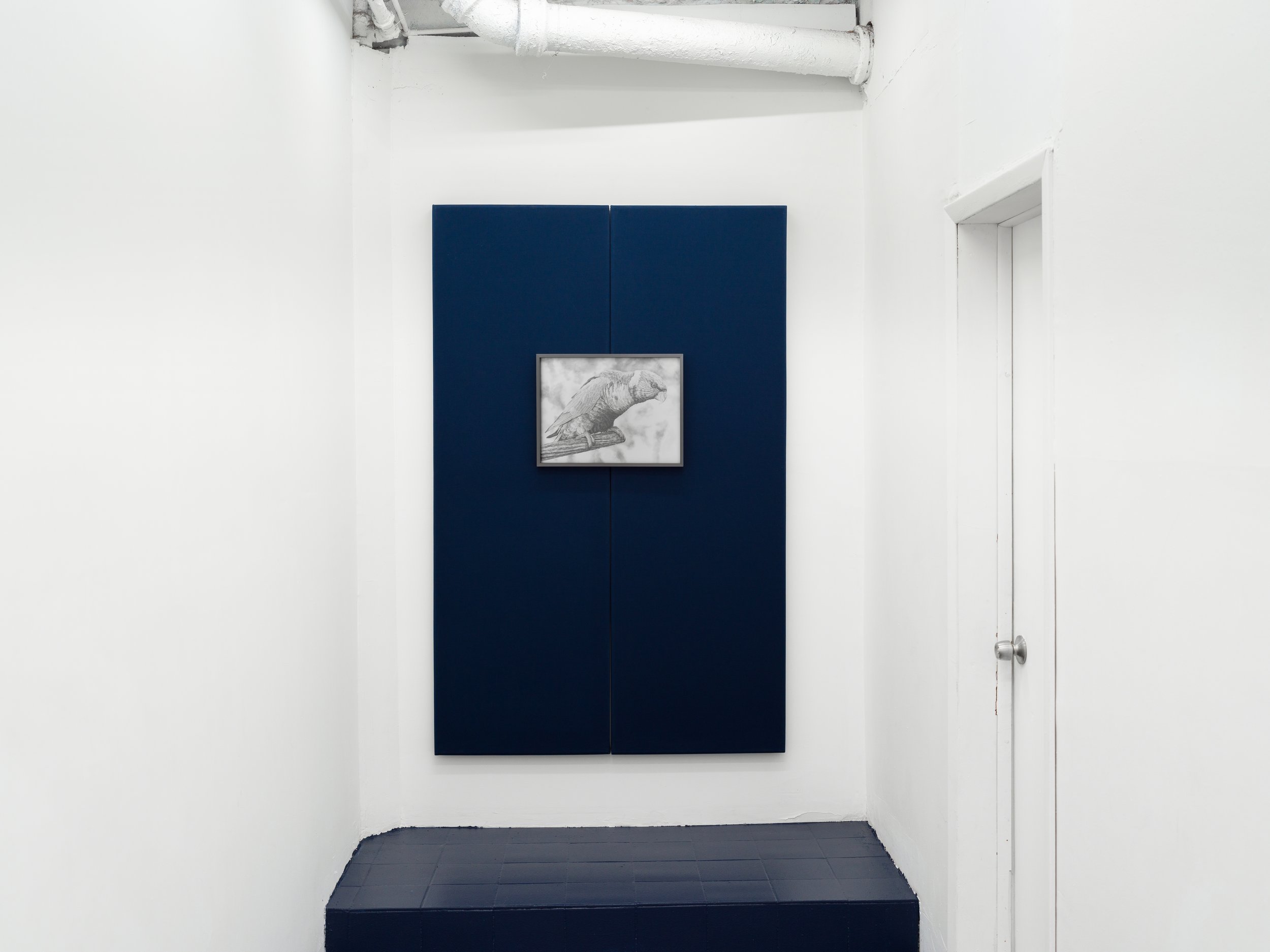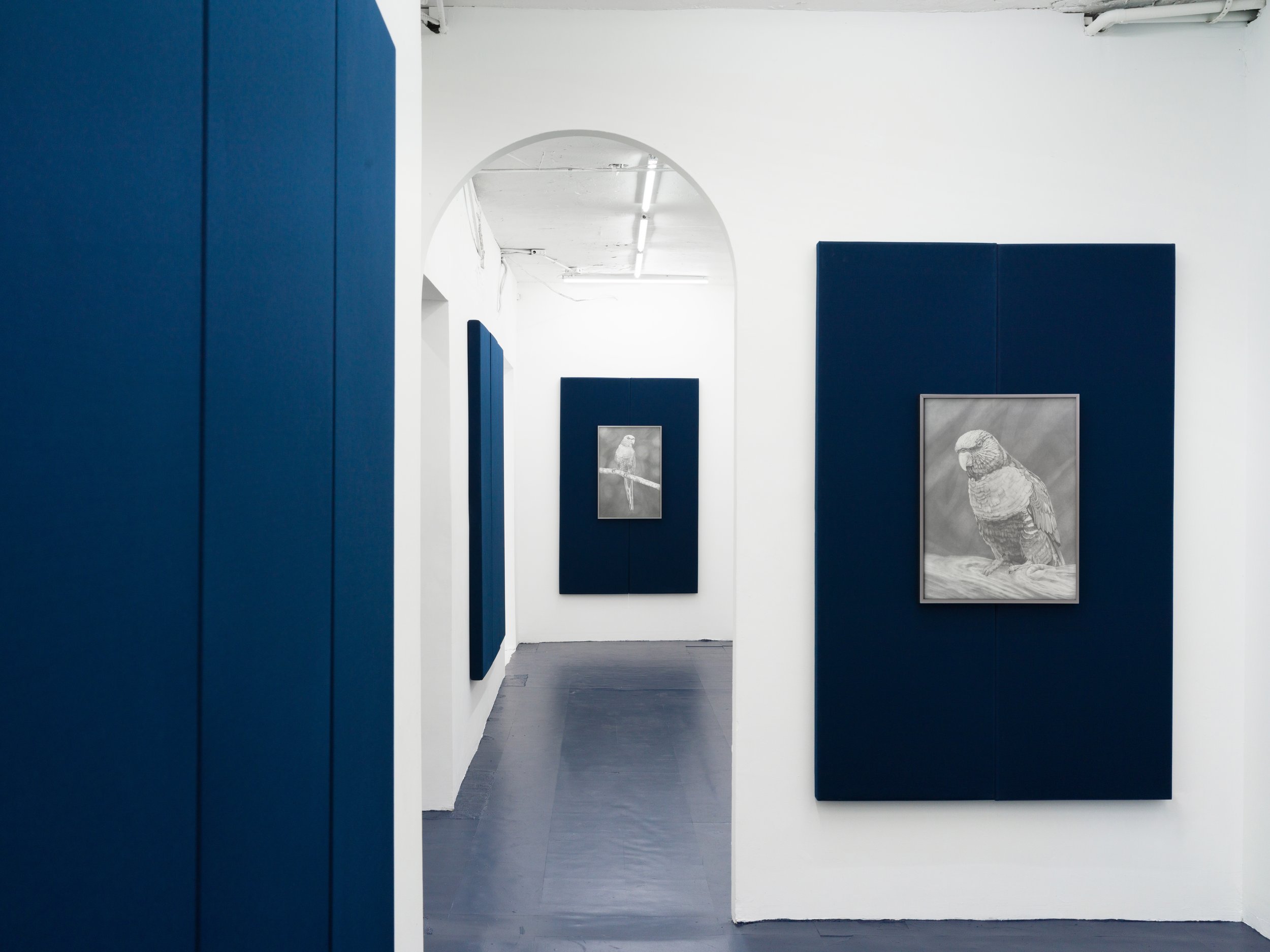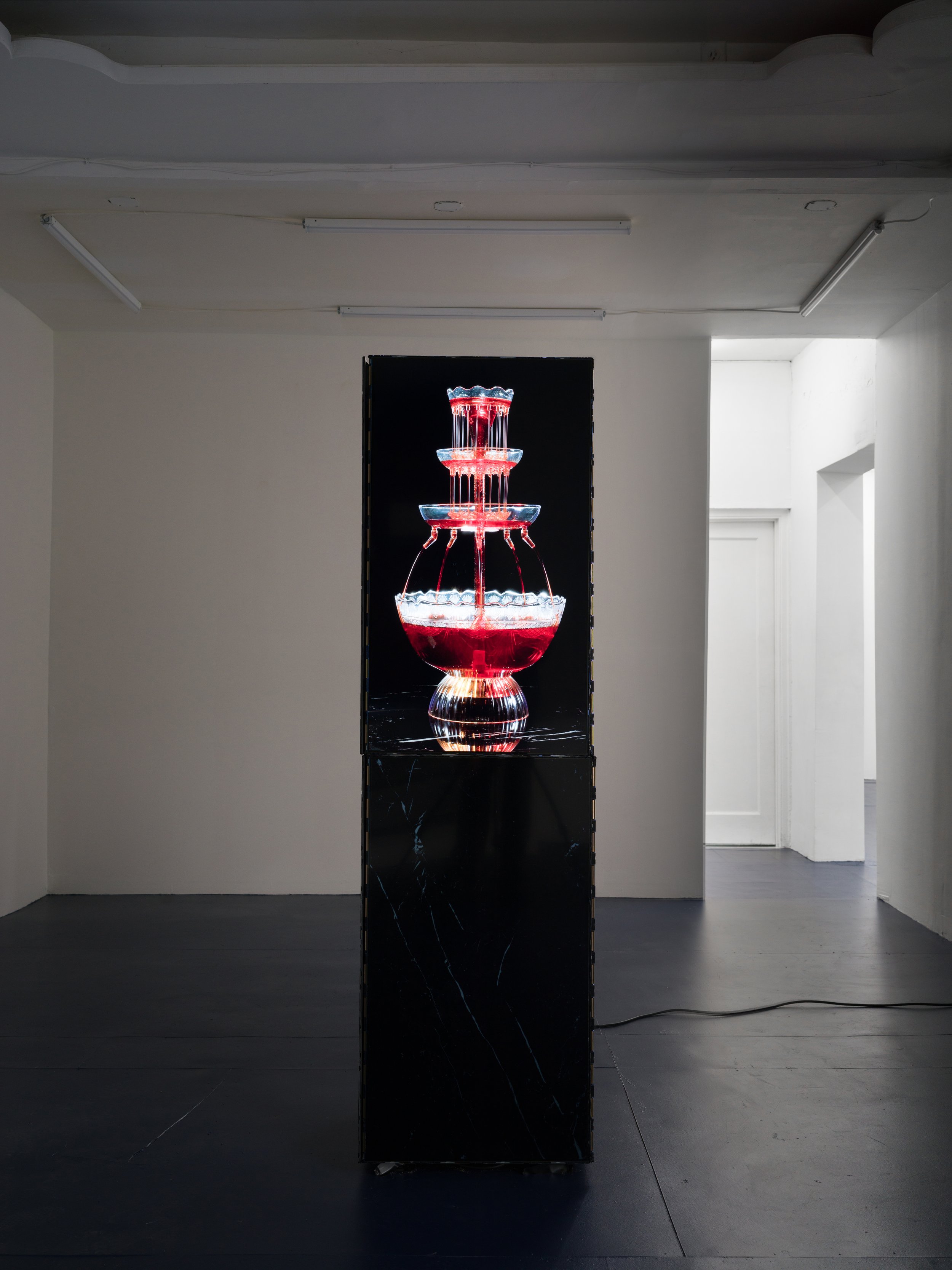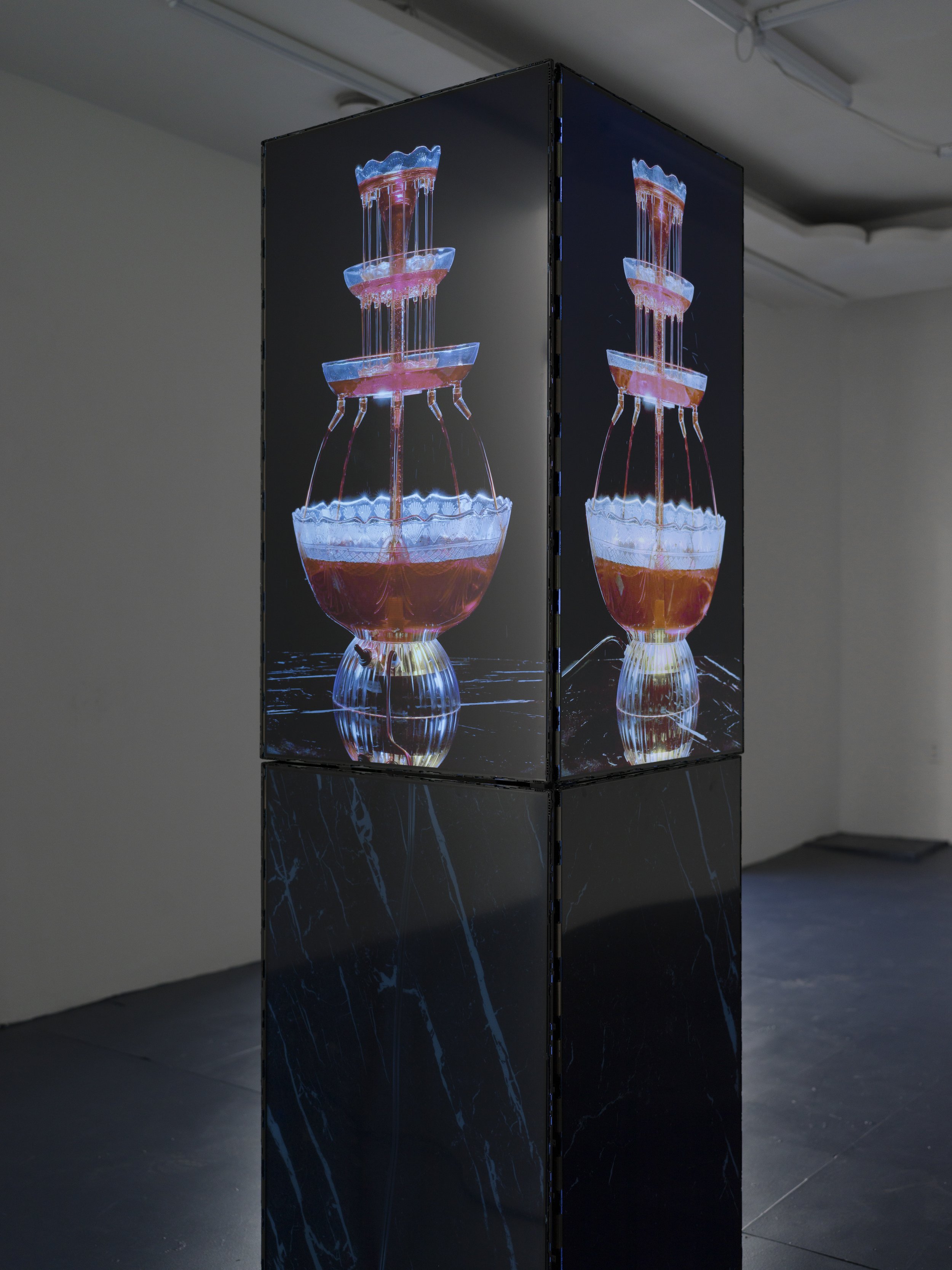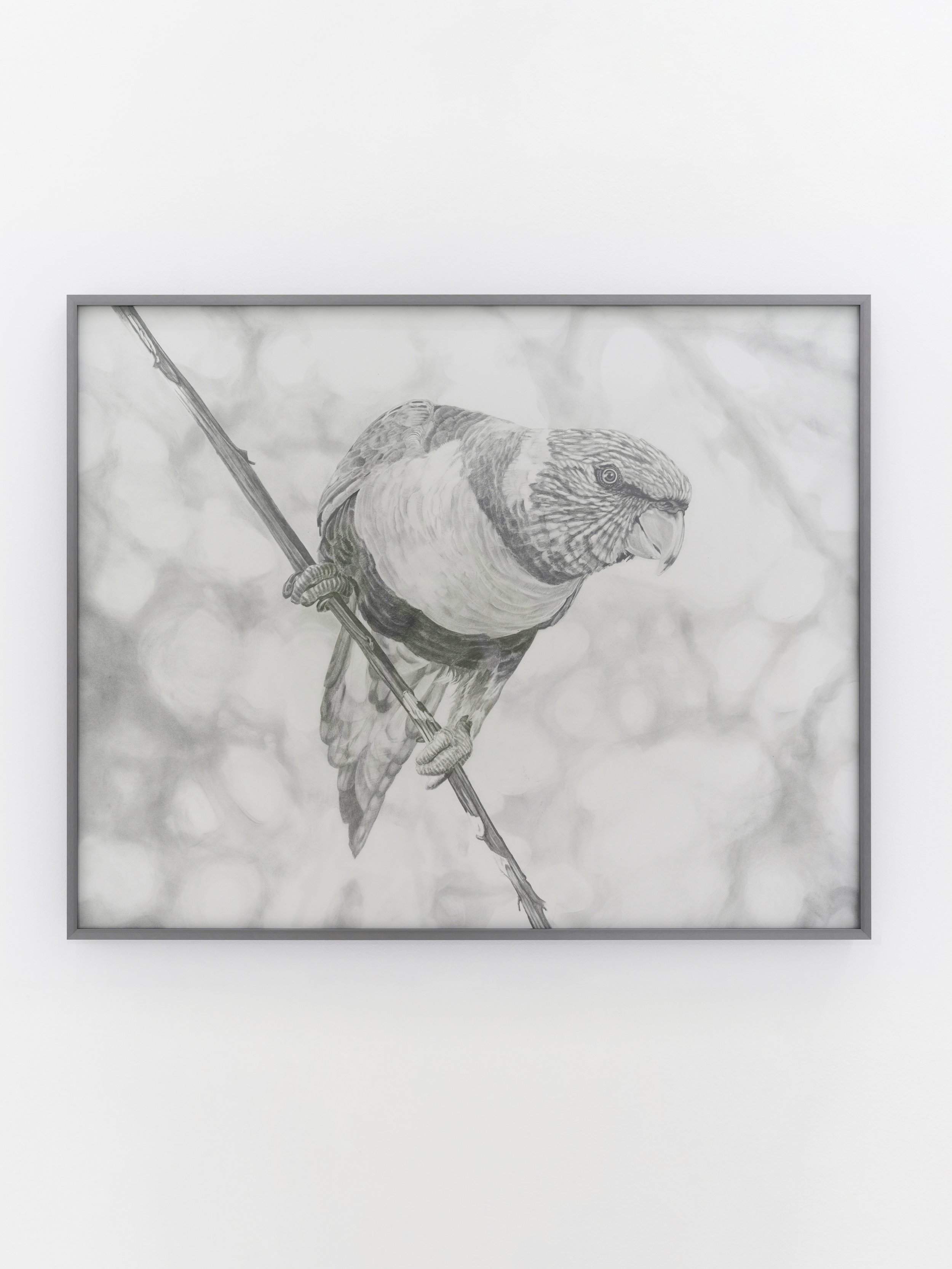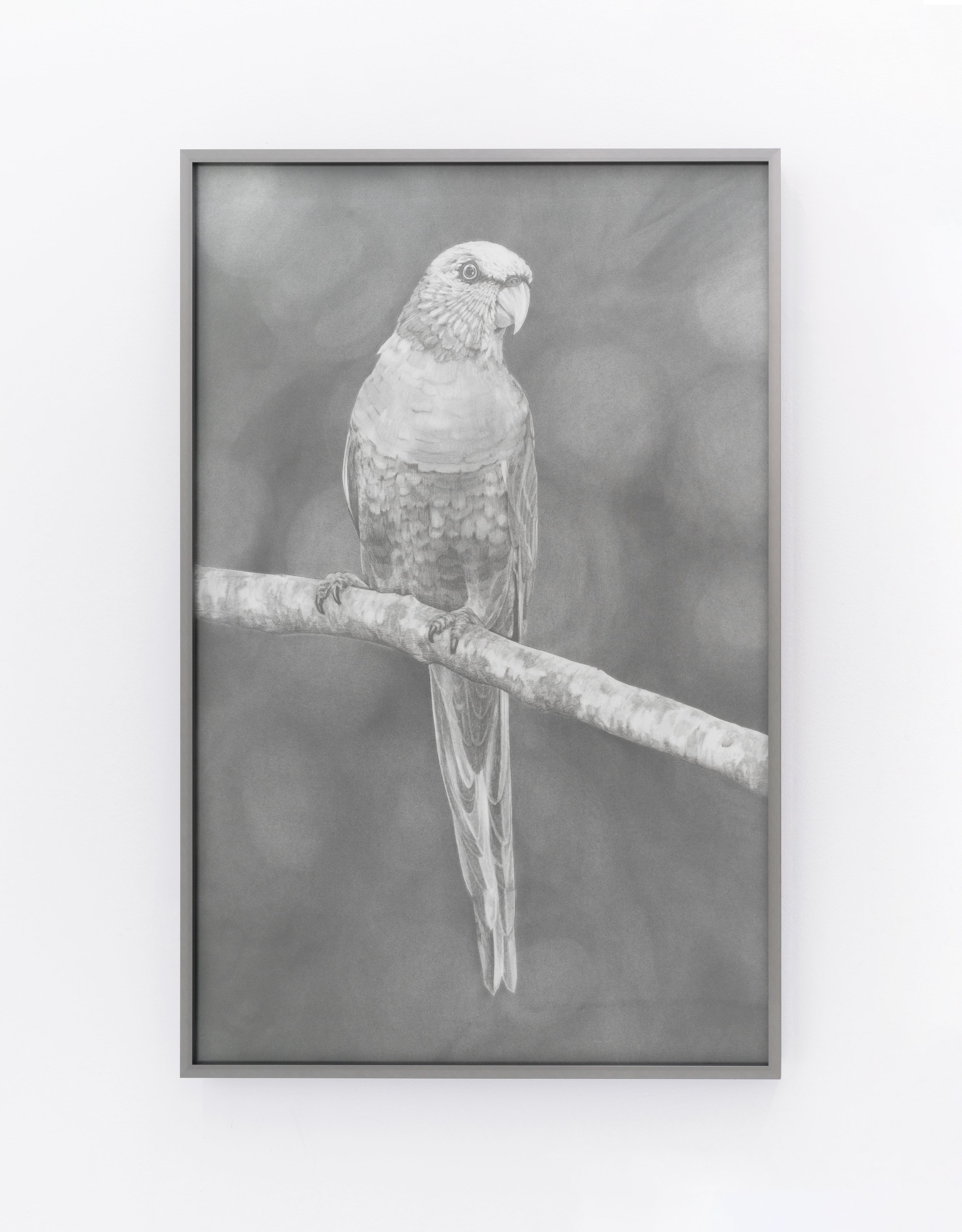Christine Egaña Navin
Carrying Capacity
March 13 - April 25, 2021
When critic and theorist Eve Sedgwick wrote about the fountain described by Proust in his seven-part novel À la recherche du temps perdu (1913–27), she noted its “links to earlier fountains in European literature, art and landscape” and how in its most fundamental form, it “offers a stylized, artificial epitome of the unending processes by which water is propelled through its life-giving round of physical metamorphoses.”[1]
In this exhibition, a party punch fountain, lit by a cinematic glow, appears as a vision, not in a clearing in the woods or the center of a walled city, but in an empty space of black shadow. The circulation of water is sublimated, or perhaps incarnated, in the video loop. Made of plastic, it streams an erotic and otherworldly red hue. Ever-circulating, the fountain is held in suspension, arrested—its three dimensions finding expression in static videos rendered on the surface of eight LED displays defining the four vertical sides of a rectangular glass prism. It is like a plinth, with nothing resting on it.
When I meet Christine Egãna Navin in her studio, an array of LED monitors of the same model stream an endless playlist of high-definition footage of animals at rest or on the hunt. The scene is reminiscent of the banks of flat screens in big box stores and the saturated videos that play on them. The lions, albatrosses, and eagles strike, drink, and sleep in perfect backlit detail while she describes her conversations with researchers and ecologists across the Pacific. She explains that “carrying capacity” is a quantitative modeling of the number of species that can be supported in a given ecosystem: a ratio of an animal population’s birth rate and death rate. It is a system of measurement inherited from commercial cattle ranching.
Rainbow Lorikeets are dropping like flies from the sky What is killing Gympie’s feathered friends? Mystery bird ‘virus’ being studied after outbreak.
There’s something biblical, even planetary, about Lorikeet Paralysis Syndrome: an untreatable virus affecting the rainbow lorikeet. A renewed interest in mass bird death, has, since the 1970s, been an indicator of major environmental shifts, and now currently signifies other imminent plagues. As common as crows in Australia, news photographs show flocks or mating pairs unable to fly or perch, their claws clenched, their orange breast, lime backs, yellow fringes, and deep blue heads covered with ants.
On the walls of the gallery are six graphite drawings of solitary Rainbow Lorikeets, their circular bird eyes in sharp focus against a blurred background, suggesting the low depths of field of contemporary high-speed nature photography. The birds make eye-contact with the lens. Instead of the striking polychromy of their feathers, the eyes themselves are the object—and source—of focus. Distinct from the repetitive talkers who star in avian language experiments or philosophical musings, Rainbow Lorikeets flaunt and shue their feathers for each other, exhibiting an iridescent variety of communication that even the most sensitive (let alone my red-green color blind) human eyes cannot capture.
—Joseph Lubitz
[1] Eve Sedgwick, “The Weather in Proust,” The Weather in Proust (Durham: Duke University Press, 2011), 2–3.
Christine Egaña Navin Fountain, 2021 8 channel 4K video, LED televisions, BrightSign media players, aluminum polyurethane 71 x 21 x 21 inches
Christine Egaña Navin Fountain, 2021 8 channel 4K video, LED televisions, BrightSign media players, aluminum polyurethane 71 x 21 x 21 inches
Christine Egaña Navin Rainbow Lorikeet 6, 2021 Graphite on paper 27 x 33.5 inches
Christine Egaña Navin Rainbow Lorikeet 3, 2021 Graphite on paper 27.75 x 20.5 inches
Christine Egaña Navin Rainbow Lorikeet 5, 2021 Graphite on paper 25 x 17 inches
Christine Egaña Navin Rainbow Lorikeet 7, 2021 Graphite on paper 18.75 x 27.75 inches
Christine Egaña Navin Rainbow Lorikeet 9, 2021 Graphite on paper 14.5 x 19 inches
Christine Egaña Navin Rainbow Lorikeet 1, 2021 Graphite on paper 30.75 x 21.25 inches





